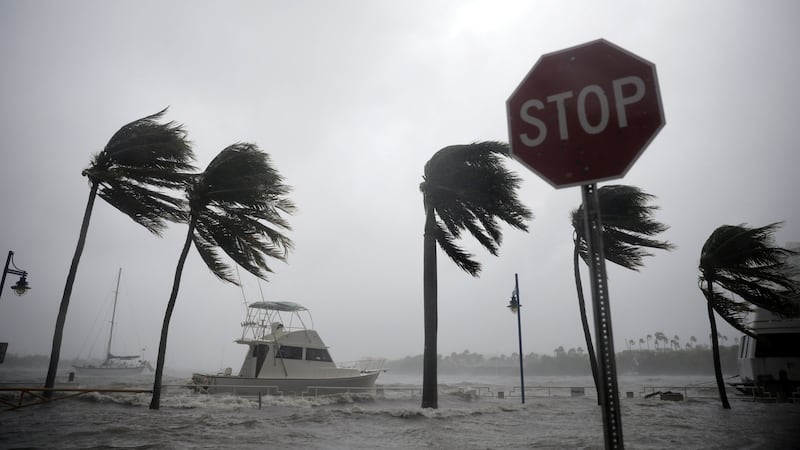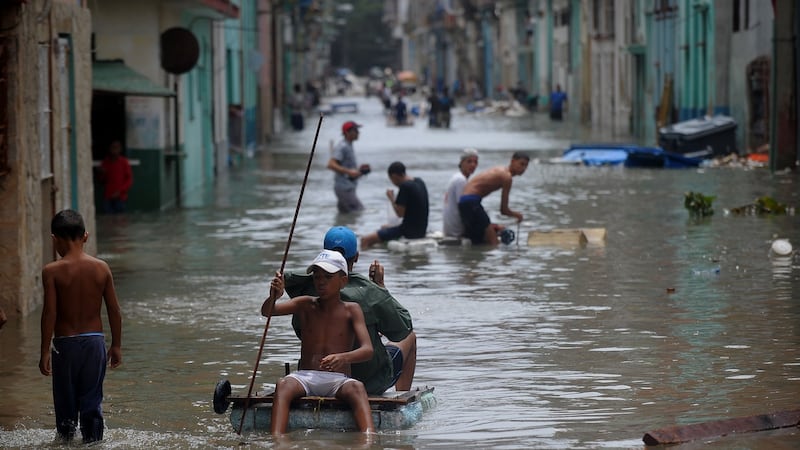Florida is bracing for further deadly destruction as the southern US was left reeling from its second major hurricane in two weeks.
Sixteen days after Hurricane Harvey caused major flooding in Texas and western Louisiana, the southern state of Florida was overwhelmed by Irma, a deadly 480km-wide storm that had already left a trail of destruction through the Caribbean.
Miami was deluged, its streets inundated with storm swells from the ocean, as Irma moved north across the state after making landfall in the south Florida Keys shorting after 9am on Sunday.


Winds of 150km/h were recorded at Miami International Airport as the counter-clockwise hurricane winds battered the coast, pushing the water inland.
Miami’s financial district was flooded, trees and power lines were downed and businesses and homes inundated as streets turned into rivers.
Further north in West Palm Beach, close to where Donald Trump’s Mar-a-Lago estate and several Trump hotels are located, the region sustained significant damage with hurricane winds and torrential rain battering the area.
Inundation
But by Sunday night, focus was switching about 200km west across the Florida peninsula, where towns such as St Petersburg, Naples and Tampa were braced for storm surges of up to 15ft as the hurricane moved north along the west Florida coast.
Irma made a second landfall on the western coast near Naples, a city of 21,000 people, late on Sunday, with hurricane force winds hitting the area.
Marco Island, south of Naples, registered winds of 210kmmayor Bob Buckhorn, warning the 337,000 residents to prepare for major inundation.
“We know we are ground zero for this storm. We have avoided it for 90 years but our time has come to be ready,” he said on Twitter.
But even as the west coast of Florida began to sustain intense rain and winds from the storm, relentless torrential rain continued in Miami, with much of the city under water and a curfew imposed from 7pm.
The Florida Keys also remained cut off from the mainland on Sunday night after the main US-1 road was flooded. Images showed water covering cars and flooding buildings.
With about 6.5 million people ordered to leave the state or go to protected areas, thousands of people had fled to shelters in the region, with schools, churches and community buildings opening their doors for residents.
Power shortages have engulfed the region with more than two million homes now without electricity.
Residents in some counties were urged to boil water before drinking amid concern that flood waters may have infiltrated the public supply.
Meanwhile, in Cuba and the Caribbean islands reconstruction efforts were under way as the region began to count the cost of one of the fiercest hurricanes ever recorded.
Macron
Cuba was hit by the hurricane late Friday and throughout Saturday, with Irma skimming the northern shoreline, the centre of the island’s tourism industry.
In the city of Caibarien, about 300km east of the capital Havana, streets were flooded and buildings destroyed.
Havana was also flooded and about 10,000 people were evacuated from the centre of the city. There were no reports of deaths.
A BBC crew reported widespread destruction in the British Virgin Islands, where the floods left communities devastated and boats piled on top of one another.
The Royal Air Force was using the airport in Tortola as a base as they tried to ferry people out of the area and move supplies in.
French president Emmanuel Macron will visit St Martin on Tuesday.
At least eight people have died on the island, and 95 per cent of its buildings have been destroyed.
Elsewhere, the US state department said 1,200 Americans had been evacuated from the Dutch part of the island, which has reportedly seen widespread looting.












